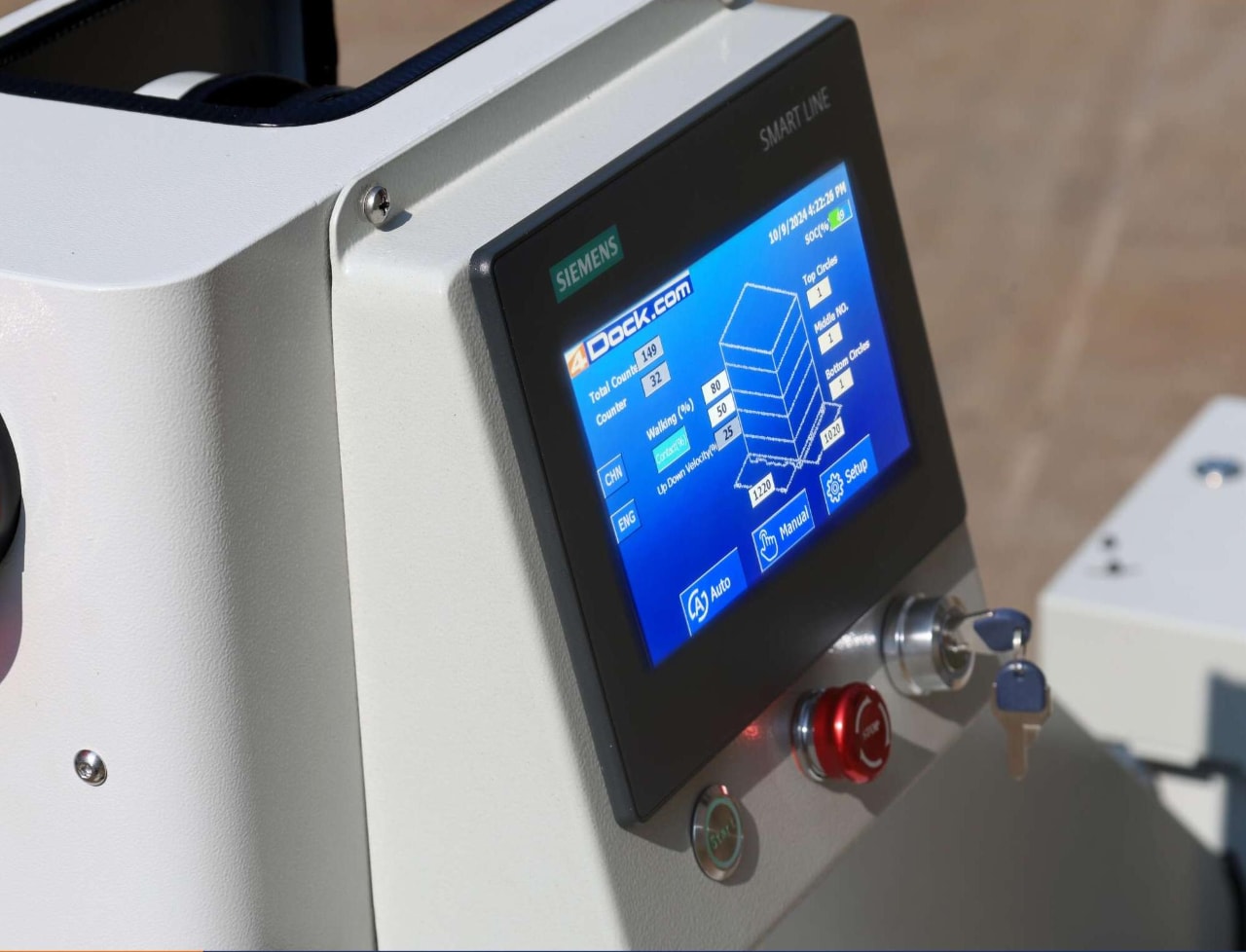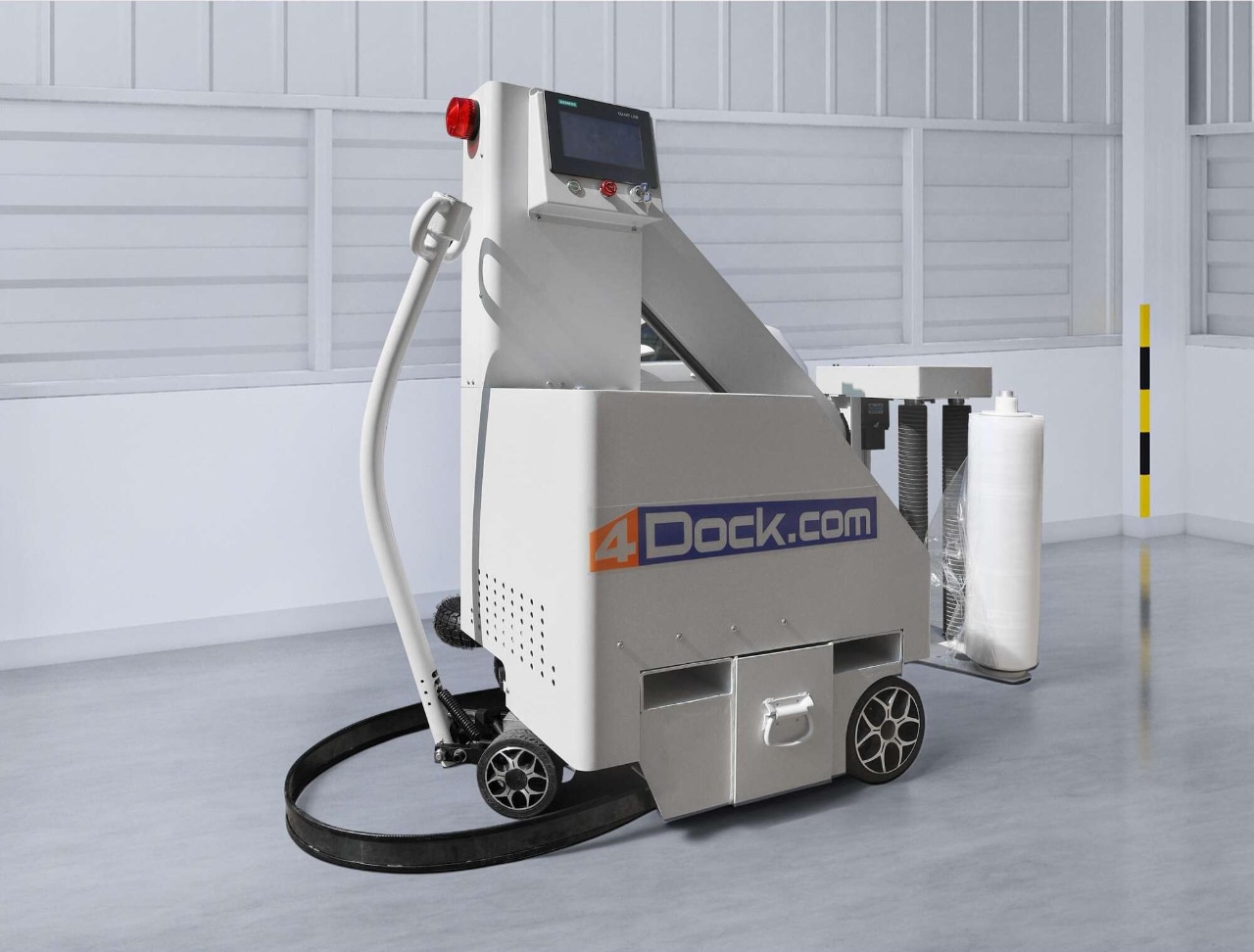In the world of warehouse operations and logistics, efficient pallet wrapping is a crucial step in ensuring the secure and safe transportation of goods. Two common types of stretch wrappers used for this purpose are the semi-automatic mobile stretch wrapper and the fixed stretch wrapper. Each has its own set of advantages and disadvantages, making them suitable for different warehouse environments and operational needs. In this blog post, we will compare these two types of stretch wrappers to help you determine which one is the best fit for your business.
Semi-Automatic Mobile Stretch Wrapper
Efficient Wrapping
The semi-automatic mobile stretch wrapper, such as the one offered by 4Dock, features a semi-automatic design that allows for fast and efficient pallet wrapping. This ensures that your goods are securely wrapped in a short amount of time, improving the overall productivity of your warehouse operations.
Easy Mobility
One of the standout advantages of the mobile stretch wrapper is its mobility. Equipped with wheels, it can be easily moved to different work areas within the warehouse. This flexibility makes it ideal for various warehouse settings where wrapping may be needed in multiple locations.
Stable & Durable
Despite its mobility, this stretch wrapper provides stability and durability. The 52"x52" large base ensures that the machine remains stable during operation, accommodating different pallet sizes without compromising performance.
Smart Operation
The simple control panel reduces manual effort and ensures consistency in the wrapping process. Operators can easily control the wrapping parameters, leading to uniform and reliable results for each pallet.

Free 1-Month Trial
4Dock offers a free 1-month trial for their semi-automatic mobile stretch wrapper. This allows potential customers to experience the benefits of the machine firsthand before making a purchase decision, reducing the risk associated with investing in new equipment.

Fixed Stretch Wrapper
High Efficiency for Large Volumes
Fixed stretch wrappers are typically installed at a specific location in the warehouse and are designed to handle high volumes of pallet wrapping. They can wrap pallets at a faster rate than mobile wrappers, making them suitable for businesses with high throughput requirements.
Automation and Integration
Fixed stretch wrappers can be integrated with other warehouse automation systems, such as conveyors and palletizers. This high level of automation reduces the need for manual intervention and can significantly increase the speed and accuracy of the wrapping process.
Limited Flexibility
Unlike mobile stretch wrappers, fixed stretch wrappers are stationary. If your warehouse operations require wrapping in multiple locations or if you have a dynamic workflow, a fixed wrapper may not offer the flexibility needed.
Higher Initial Cost
The installation of a fixed stretch wrapper usually requires a significant initial investment. This includes not only the cost of the machine itself but also the expenses related to infrastructure modifications and integration with existing systems.
Space Requirements
Fixed stretch wrappers typically require a dedicated space in the warehouse. This can be a limitation for businesses with limited warehouse space or those that need to maximize the use of their available area.
Choosing the Right Stretch Wrapper for Your Business
The choice between a semi-automatic mobile stretch wrapper and a fixed stretch wrapper depends on several factors, including your warehouse layout, operational volume, budget, and specific wrapping needs.
If you need the flexibility to move the wrapping equipment around, a semi-automatic mobile stretch wrapper like the one from 4Dock could be the ideal solution. Its ease of use, mobility, and stability make it a versatile addition to a variety of warehouse settings.
In conclusion, both semi-automatic mobile stretch wrappers and fixed stretch wrappers play important roles in warehouse operations. By understanding the advantages and disadvantages of each type, you can make an informed decision that aligns with your business's specific requirements and goals.

